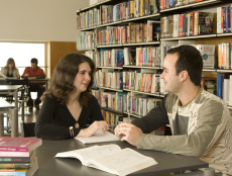Titulo Estágio
Augmented Reality Roman Mosaic
Áreas de especialidade
Sistemas de Informação
Local do Estágio
DEI
Enquadramento
[url=https://docs.google.com/document/d/1GtXzPvxa50Y7qg5dfEPEDppm-W2QHLwFUNTm0yvJFvk/edit#heading=h.m0y8iddkpwfp][Mais info.][/url]
Augmented Reality (AR) applications are an increasing presence in our lives. AR is increasingly used in gaming applications, marketing, home improvement, cultural activities, etc. An AR mobile application would have an obvious interest in the context of a visit to the ruins site of Conimbriga (and other Roman mosaic sites). Such an application could allow users to see virtually restored mosaics by pointing their devices to a mosaic.
Objetivo
The aim of this project is to implement an augmented reality application for a specific museological site - the Conimbriga ruins.
The specific objectives are:
- To perform a detailed analysis of the current state of the art regarding high-level AR frameworks, specifically the ones that provide hybrid application support.
- To assess the feasibility of implementing AR experiences based on the existing roman mosaic sites (i.e., answer the question: can the existing AR frameworks deal with the characteristics of the outdoor mosaic images?)
- To implement a mobile hybrid application (should run on both Android and iOS) that has a collection of overlay images for each recognizable roman mosaic and allows users to iterate the AR overlay over those images (e.g. by swiping their fingers over the images). The complete system should also consider a web interface that allows the administrator to upload various overlay images and associate them with a specific on-site mosaic.
Plano de Trabalhos - Semestre 1
Semester 1
1. Analysis of existing AR frameworks (Wikitude, Layer, Vuforia, etc.), detailing their characteristics (types of recognition supported, price, support for hybrid apps, etc.),, strong and weak points
2. Assessment of the most promising frameworks against the real roman mosaic images: practical tests to check the behaviour of the AR frameworks on the site. Most likely, this will uncover limitations of the AR framework that will impose restrictions on the application to be built.
3. Definition of the architecture of the system that supports the described functionality
Plano de Trabalhos - Semestre 2
Semester 2
4. Implement the proposed mobile application plus web interface
5. Perform on-site validation of the application
6. Write the report and a scientific paper
Condições
.
Observações
Required student profile:
Because the target is the development of a hybrid app, good knowledge (or a strong will to learn) of JavaScript, HTML and CSS is a plus;
References and conferences
Noh, Z., Sunar, M. S., & Pan, Z. (2009). A Review on Augmented Reality for Virtual Heritage System. In Proceedings of the 4th International Conference on E-Learning and Games: Learning by Playing. Game-based Education System Design and Development (pp. 50–61). Springer-Verlag. https://doi.org/10.1007/978-3-642-03364-3_7
Orientador
Jorge C. S. Cardoso
jorgecardoso@ieee.org 📩
